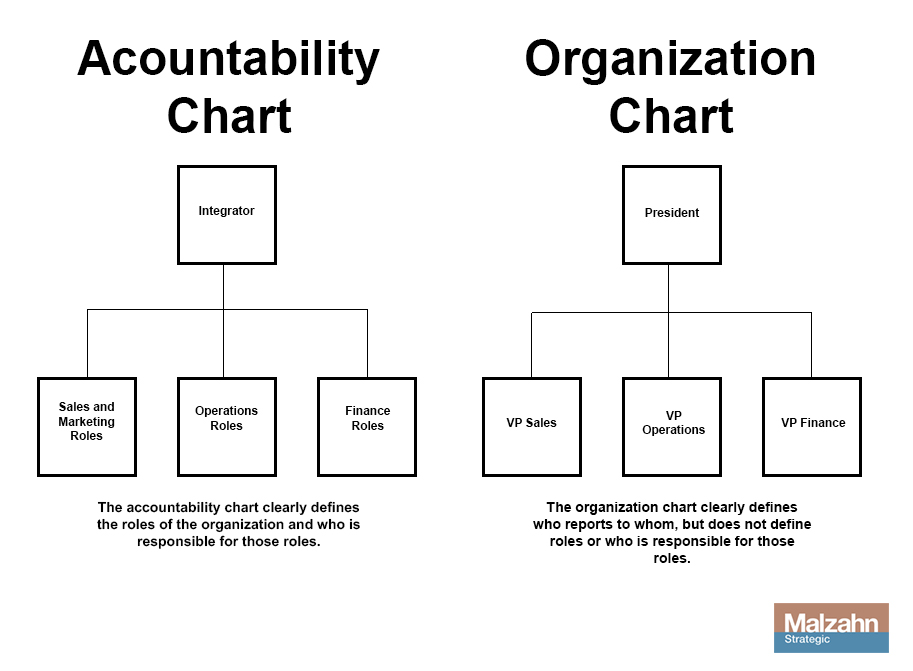
Accountability Chart Mastery – why mastering this tool leads to organization success. If your community bank, credit union, or non-banking business runs on the Entrepreneurial Operating System ( EOS®) (or even if you don’t), the accountability chart is one of the most powerful tools to getting what you want from your business.
When we speak about Accountability Chart Mastery, we are talking about your organization’s accountability chart, not someone else’s or a mythical “ideal’ accountability chart. This is the one you and your senior leadership team will be using every day to both drive accountability across the organization and decide who or which area is responsible for business functions.
What is the Accountability Chart?
The accountability chart, as opposed to the organizational chart (or org chart), is a listing of high level critical business functions (accountabilities) and where they fall into the organization. An org chart is a listing of which positions report to whom and typically has very little to do with accountabilities, but more with human ego. The goal in creating an accountability chart for your organization is to remove the human ego from the equation and focus on what the accountabilities are and where in the organization they happen.

As you and your senior leadership team build out the accountability chart for your organization, keep in mind that as you remove the human ego (on the org chart) and start transferring it over to the accountability chart, things can get a bit intense. Protected people and those who are not accountable for anything show up quickly (in EOS terms, we call this right people in the right seats, or getting the right people on the bus as defined by Jim Collins in his must read book, Good to Great). As time goes on, the senior leadership team will become accustomed to the new accountability chart and start to view the org chart as something which held them and the organization back.
In part two, we’ll highlight a few stories about how different organizations developed their accountability charts.
Resources:
- Traction: Get a Grip on your Business by Gino Wickman
- Download a free chapter of How to Be a Great Boss by Gino Wickman and René Boer to learn how to be a more effective leader and manager.
- EOS Tools download
- Contact Us for more information about building out the Accountability Chart for your community bank or credit union – we are here to help!








